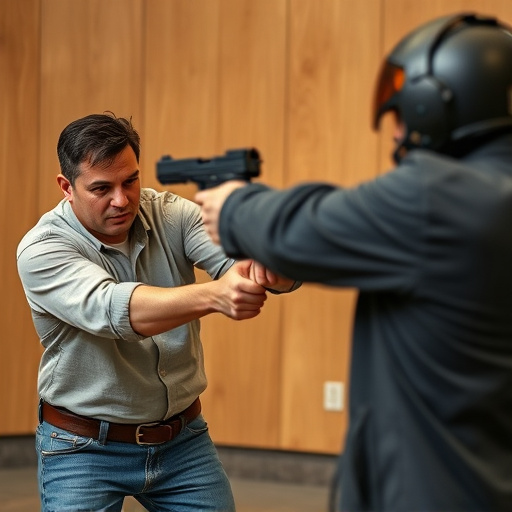Understanding muscle incapacitation is crucial when considering bulk stun guns for retail stores, as these devices temporarily paralyze individuals to enable safe intervention. The duration of paralysis varies based on factors like stun gun power output, target's BMI, and fitness level (3-5 minutes). Retailers must train staff adequately and follow legal guidelines to ensure humane treatment while maintaining public safety. Bulk stun guns offer non-lethal self-defense but require responsible sales practices and education to mitigate risks.
“In today’s world, understanding the capabilities and limitations of self-defense tools like stun guns is paramount. This article delves into the phenomenon of muscle incapacitation caused by stun guns, exploring their impact on the human body. We examine the science behind temporary muscle paralysis, focusing on factors influencing its duration. Additionally, we analyze the role of bulk stun guns in retail stores, weighing pros and cons along with safety considerations. The legal and ethical dimensions of stun gun usage are also discussed, offering a comprehensive guide for those considering self-defense options.”
- Understanding Muscle Incapitation: What It Means and Its Impact
- The Role of Stun Guns in Disabling Muscles Temporarily
- Factors Affecting the Duration of Muscle Paralysis from Stun Guns
- Bulk Stun Guns for Retail Stores: Pros, Cons, and Safety Considerations
- Legal Implications and Ethical Use of Stun Guns for Self-Defense
Understanding Muscle Incapitation: What It Means and Its Impact
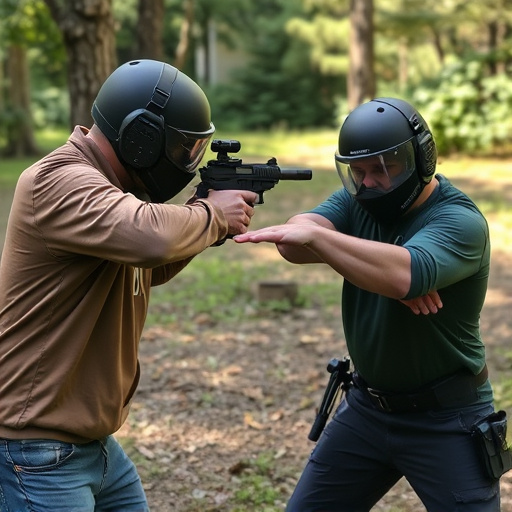
Understanding Muscle Incapitation: What It Means and Its Impact
When discussing the effectiveness of stun guns, particularly bulk stun guns for retail stores, it’s crucial to grasp the concept of muscle incapacitation. This term refers to the momentary disruption of a person’s muscular system, rendering them unable to move or defend themselves. The impact is significant, as it allows time for law enforcement or security personnel to intervene and control the situation safely. Muscle incapacitation from stun guns typically lasts between 3 to 5 minutes, providing an essential window for de-escalation and arrest.
The duration of this incapacity varies based on factors such as the power output of the stun gun, body mass index (BMI) of the target, and their physical fitness level. Retail stores equipped with bulk stun guns must understand these dynamics to ensure their staff are trained appropriately and customers are treated humanely while maintaining public safety.
The Role of Stun Guns in Disabling Muscles Temporarily
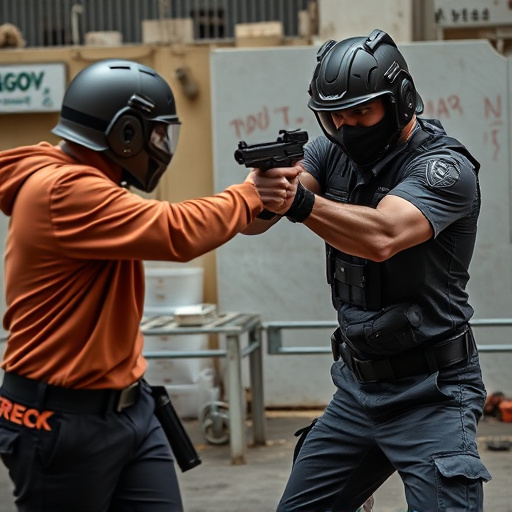
Stun guns, also known as electronic control devices (ECDs), have emerged as powerful tools for self-defense and law enforcement. Their primary mechanism involves delivering an electric shock to temporarily incapacitate the target, which can significantly extend or even halt muscular movement. When a stun gun is activated, it generates a high-voltage, low-amperage electrical pulse that disrupts the nerve signals controlling muscle contraction. This disruption leads to muscle twitching and eventual paralysis, rendering the subject immobile for a period of time.
Bulk stun guns for retail stores are designed to ensure accessibility and effectiveness in potentially dangerous situations. These devices are generally compact and lightweight, making them easy to carry and use discreetly. The duration of muscle incapacitation varies depending on factors such as the model of stun gun, the power output, and the target’s physical condition. However, even a brief period of disability can be crucial in creating an escape route or gaining time to call for help, thereby underscoring the strategic value of stun guns as personal defense tools.
Factors Affecting the Duration of Muscle Paralysis from Stun Guns
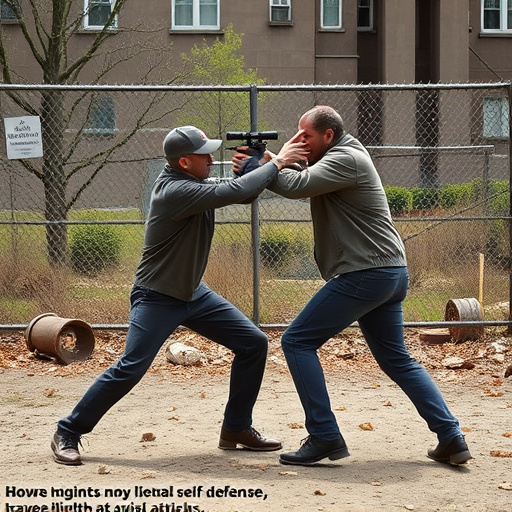
The duration of muscle incapacitation caused by stun guns can vary significantly due to several factors. One key factor is the power output of the device, with higher-wattage bulk stun guns for retail stores typically delivering more intense jolts that can result in longer periods of paralysis. Another influencing element is the contact point and area targeted; striking multiple nerve endings or larger muscle groups can extend the duration of immobilization.
Additionally, an individual’s physical condition, body size, and muscle mass play a role in how long they remain paralyzed after being stunned. Larger individuals with more robust muscles might experience shorter durations due to the dispersal of the electrical current across a broader area. Environmental conditions, such as temperature and humidity, can also subtly impact the effectiveness and duration of the stun gun’s effects.
Bulk Stun Guns for Retail Stores: Pros, Cons, and Safety Considerations

Bulk stun guns for retail stores offer a range of benefits and challenges. One of the primary advantages is cost-effectiveness; purchasing stun guns in bulk can significantly reduce the unit price, making them an attractive option for store owners aiming to equip their staff with personal protection tools. This is particularly relevant in high-theft areas or regions where security is a priority. Moreover, having stun guns readily available allows retailers to enhance customer safety and deter potential criminals, fostering a secure shopping environment.
However, several considerations come into play when retail stores opt for bulk stun gun purchases. Safety is paramount; ensuring proper training for all staff members who will carry these devices is crucial to prevent accidental discharges and ensure effective use during emergencies. Additionally, legal regulations vary across regions, and what may be considered a reasonable force in one area might not be in another. Retailers must stay informed about local laws to avoid legal repercussions. Despite these challenges, bulk stun guns remain a popular choice for many businesses seeking to empower their staff and create safer public spaces.
Legal Implications and Ethical Use of Stun Guns for Self-Defense
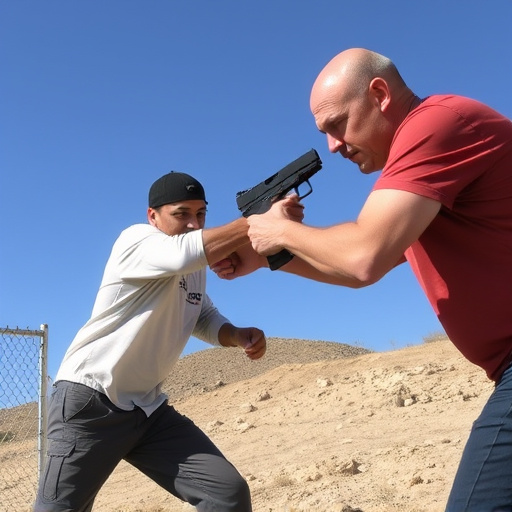
The use of stun guns, or electric conducting weapons (ECWs), for self-defense has sparked debates regarding legal implications and ethical considerations. As bulk stun guns for retail stores gain popularity, it’s crucial to understand their impact on society. Legally, the possession and use of stun guns vary across jurisdictions, with some regions allowing them without a license while others restrict their use to law enforcement or require permits. This disparity can lead to confusion and potential misuse if individuals are not educated about local laws.
Ethically, the non-lethal nature of stun guns is often seen as an advantage for self-defense, offering a safer alternative to firearms. However, critics argue that their use could escalate situations and cause unnecessary harm if not used responsibly. With proper training and understanding, stun guns can be effective tools for personal safety, but retailers and users must prioritize responsible sales and usage practices to ensure public safety and adhere to legal frameworks.
In conclusion, understanding the duration of muscle incapacitation from stun guns is crucial for both self-defense enthusiasts and retailers considering bulk stun gun purchases. While these devices offer a temporary yet powerful solution, various factors can influence the length of paralysis. Retailers must weigh the pros and cons of stocking bulk stun guns, ensuring consumer safety while acknowledging their role as tools for personal protection. Responsible use aligns with legal implications, emphasizing the ethical deployment of stun guns in self-defense scenarios.
